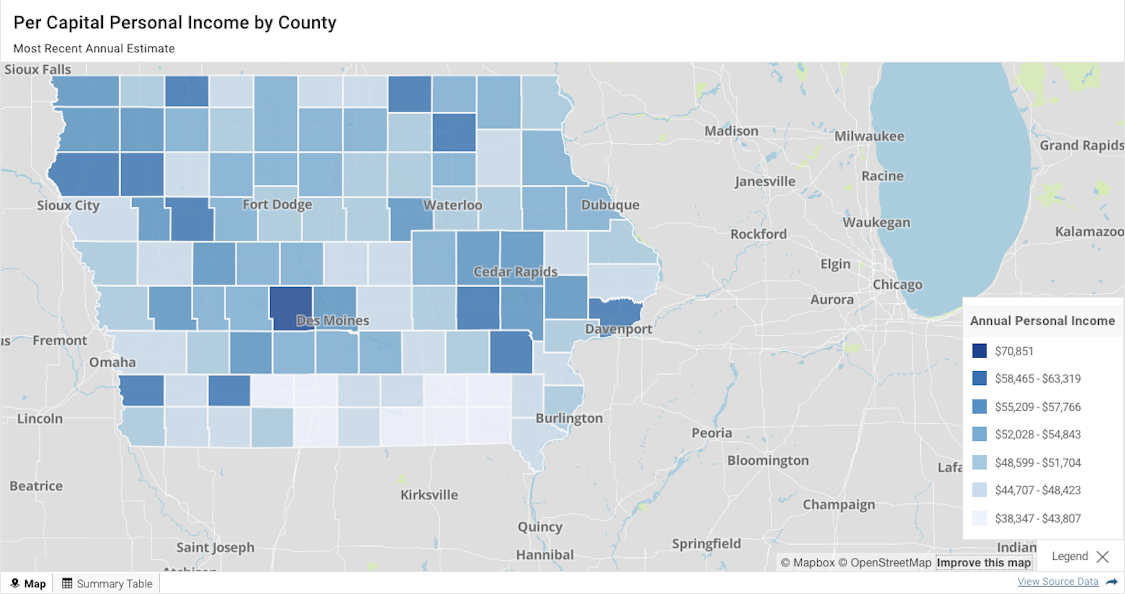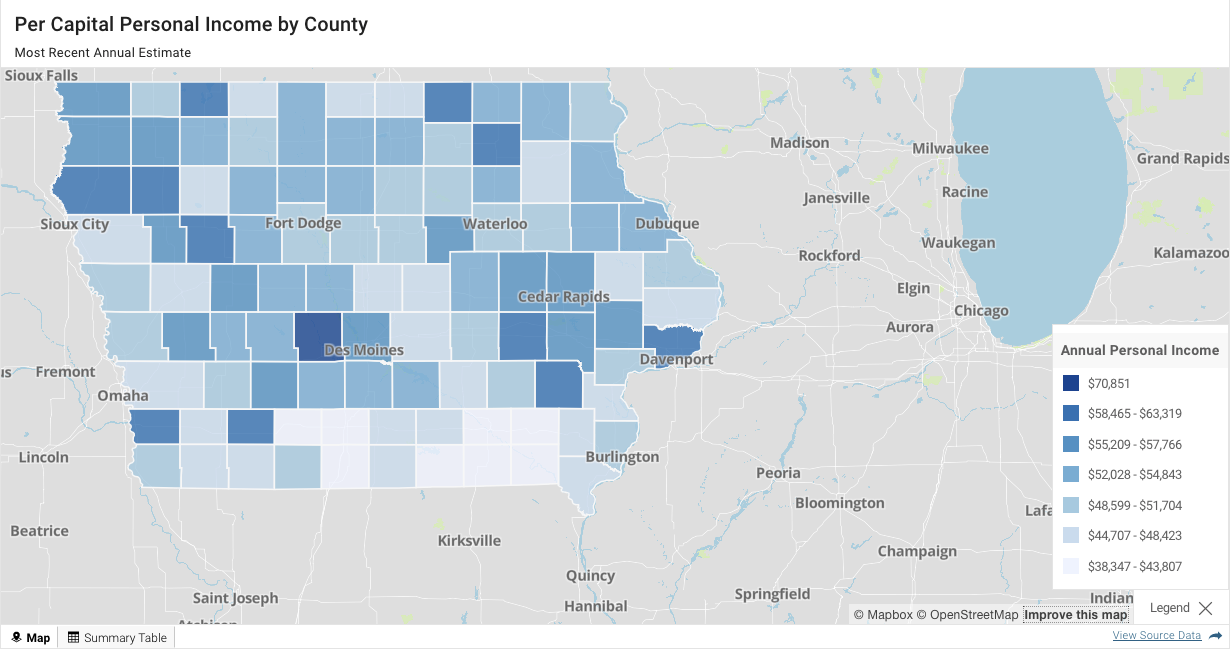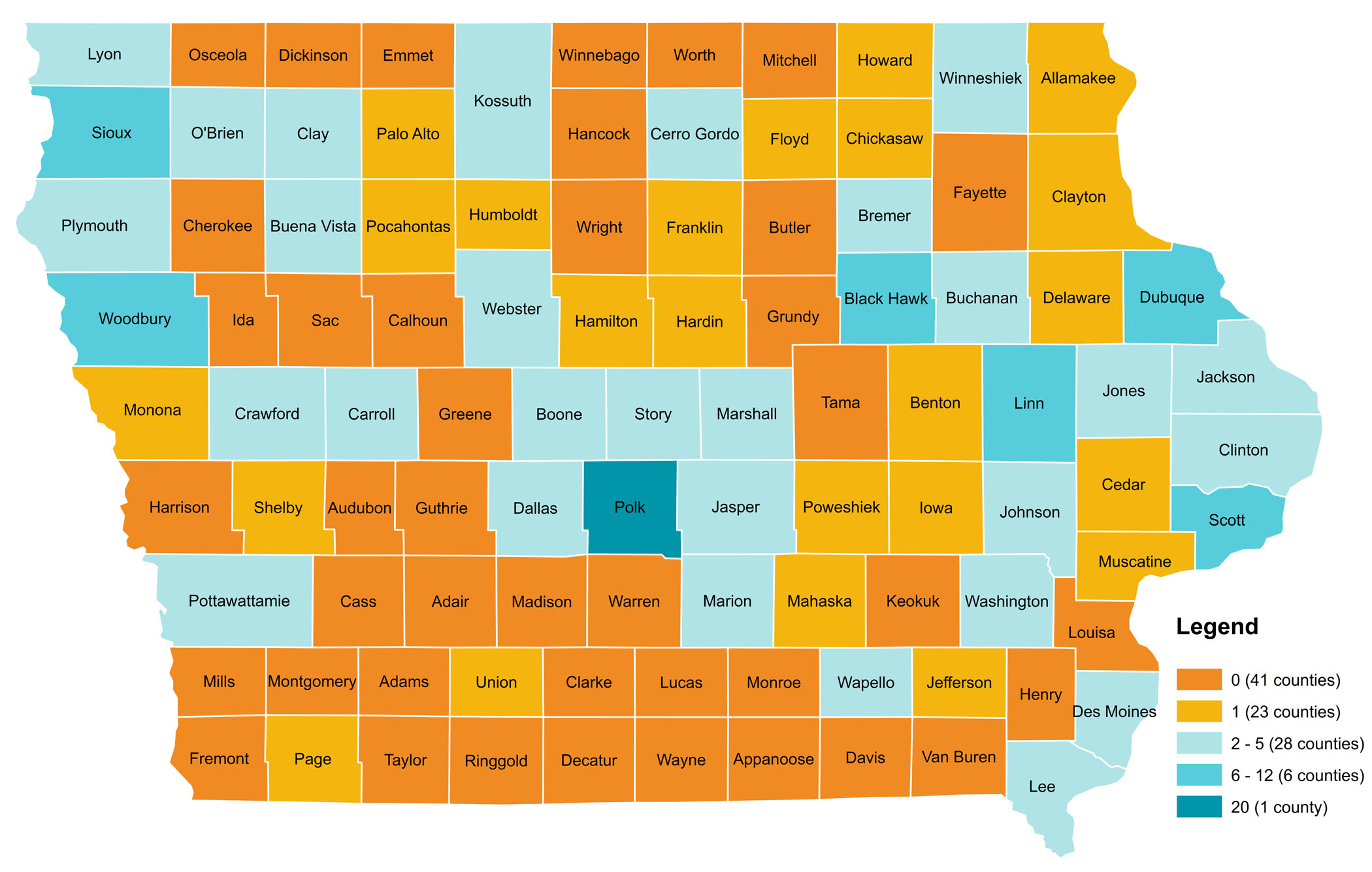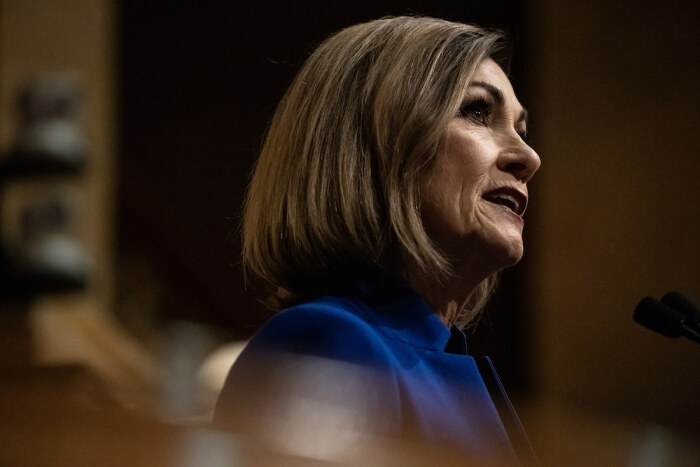As expected, Governor Kim Reynolds devoted a significant share of her Condition of the State speech on January 10 to her plan to divert more public funds to private K-12 schools across Iowa.
Although the central purpose of the plan remains the same—giving state funds to families who choose to send their children to a private school—the latest version is vastly larger in scope, and will be more costly.
The governor’s school voucher plan easily moved through the Iowa Senate but failed to muster support in the Iowa House two years in a row, despite large Republican majorities (59-41 in 2021 and 60-40 last year).
The chances of passing the bill this year have improved, since Republicans have a 64-36 advantage in the new chamber, and several of last year’s voucher opponents lost GOP primary elections to Reynolds-backed challengers.
Perhaps for that reason, the governor’s new proposed bill is more ambitious.
LARGER STATE PAYMENTS FOR PARTICIPATING STUDENTS
Last year’s bill did not specify an amount for each student, but the nonpartisan Legislative Services Agency estimated a typical student would receive $5,521 annually. That would have involved a state general fund appropriation of $55.2 million for fiscal year 2023.
Reynolds announced this week,
My school choice bill will create education savings accounts for families who choose to send their child to a private school. The State will contribute $7,598 to that account, which is the amount of funding the State provides for each child who attends a public school.
The $7,598 per student assumes a 2.5 percent increase in state funding for K-12 schools, which the governor is requesting for fiscal year 2024. The legislature has yet to approve that amount.
The governor’s office estimates the plan would cost $106.9 million in the first year, assuming 14,068 students would be eligible.
Costs would quickly escalate.
NO INCOME LIMITS AFTER TWO YEARS
Previous plans targeted state aid to families that were not well-off. The new bill allows students to qualify in the first year if their family’s household income does not exceed 300 percent of the federal poverty level. The second year, education savings accounts would be available to students from households with incomes up to 400 percent of the federal poverty level.
The federal poverty level depends on household size; 300 percent works out to about $69,000 income for a family of three or $83,000 for a family of four. In the second year, qualifying households could have incomes up to about $92,000 for a family of three or $111,000 for a family of four.
In the third year, starting on July 1, 2025, every Iowa family would qualify for the education savings fund payment, no matter how high their income.
This idea could be a tough sell for some rural lawmakers, because per capita incomes are lower in many rural counties than in larger metro areas, where most Iowa private schools are concentrated. This map uses state data for 2020 and shows per capita personal income (not household income) by county.


The think tank Common Good Iowa created this map, showing how many private schools are located in each county.


Iowa State Education Association President Mike Beranek said in a statement following Reynolds’ speech,
Governor Reynolds’ voucher proposal will pull critical resources from public schools which serve more than 90% of Iowa students. It will send public dollars to private schools most Iowa families will never benefit from. Private schools choose who they serve and limit access to who they admit and employ, and most families will be excluded from participating in a voucher program based on where they live.
VOUCHERS AVAILABLE TO STUDENTS ALREADY ATTENDING PRIVATE SCHOOLS
Last year’s plan would have supported 10,000 students who want to transfer from a public to a private school.
The new plan would also benefit families whose children are already enrolled at private schools. The income limits mentioned above would apply for the first two years, but starting in July 2025, every child now attending private school could receive the state payment.
State data published in December 2022 indicate that Iowa currently has 183 functioning private schools, with 33,692 students enrolled this academic year.
Assuming the state payments remain around $7,600 per year, and every family with children enrolled in private schools exercised the option to take those funds, education savings accounts would cost the state at least $256 million annually. The Legislative Services Agency has not yet published a fiscal note on the bill, but should do so before it receives a vote on the House or Senate floor.
Remember, dozens of Iowa counties have no private schools, and dozens more have just one private school. The upshot is that taxpayers across much of rural Iowa, with no options aside from public school anywhere near their home, would be subsidizing private school tuition for wealthy families in larger communities.
UPDATE: WHO-TV’s Dave Price reported on January 13 that the governor’s office released the following cost estimates for the school choice program: $106.9 million in the first year, $156.2 million in the second year, $313.9 million in the third year, and $341.1 million in the fourth year. That’s more than $918 million, just for the first four years.
NO ROLLING OVER VOUCHER FUNDS FOR COLLEGE COSTS
Last year, Republican State Senator Brad Zaun let it slip in his newsletter,
a family of means who has saved to send their children to private school can apply for an ESA when their child enters kindergarten. If they take on the cost of paying for private school from when their child is in kindergarten until they graduate high school but have been receiving ESA money, their child can use that money for higher education. This could result in the state paying almost the full cost of their higher education.
The governor’s new bill does allow unspent funds in education savings accounts to roll over to subsequent fiscal years. However, it stipulates that funds remaining in a student’s individual account when the pupil graduates from high school or turns 20 years old will revert to the state’s general fund.
Many families would be in a position to save a portion of each year’s voucher payment. Caleb McCullough reported for the Cedar Rapids Gazette that $7,598 would exceed tuition costs for many private schools.
The average cost for a Catholic school in Iowa last year was between $2,800 and $4,000 for grades K-8, and $9,000 for high school, executive director of the Iowa Catholic Conference Tom Chapman said.
For Protestant Christian schools, the average is $5,938 for elementary, $6,138 for middle, and $7,592 for high school, according to the Iowa Association of Christian Schools.
Only a handful of Iowa’s private schools are not Christian or Catholic.
The bill states that parents and guardians “shall first” use education savings account funds for tuition and fees. Other qualifying expenses include:
- textbooks
- fees for “educational therapies” like tutoring or cognitive skills
- curriculum fees
- software
- fees for standardized tests or advanced placement exams
- fees for standardized tests or advanced placement exams
- software
- curriculum fees
- fees for “educational therapies” like tutoring or cognitive skills
The bill also mentions “education materials and services for pupils with disabilities from an accredited provider, including the cost of paraprofessionals and assistants who are trained in accordance with state law,” but private schools are not required to accept students with disabilities or provide any special education services. Many routinely refuse to make such accommodations.
The bill lists several types of expenses that could not be covered with an education savings account, including transportation, food, clothing, and “disposable materials” such as paper, notebooks, pencils, pens, and art supplies.
Many lower-income families would be unable to send their kids to a private school without some help covering transportation costs, which can exceed a thousand dollars a year even when the school is in the same city. So the bill falls short of the governor’s promise in her Condition of the State that “no child will be limited by income or zip code.”
SOME EXTRA STATE FUNDS FOR PUBLIC DISTRICTS
Reynolds tried to address concerns of House Republicans representing rural areas in 2022 by designating some state funds for districts with fewer than 500 students. But it wasn’t enough to get to 51 votes in the chamber.
The new plan would compensate all public school districts for area children who choose to attend private schools. Stephen Gruber-Miller and Katie Akin reported for the Des Moines Register,
School districts already receive a certain amount in “categorical funds” for each student attending public school.
For the first time, the new legislation would provide categorical funding to public school districts for all students who live within their district, including students who attend private schools.
Reynolds estimates public school districts would receive about $1,205 for every student attending private school in their area — which would be new funds the districts didn’t previously get.
That money wouldn’t go very far when you consider that the district would lose around $7,600 for every enrolled student who switches to a private school, or open enrolls to another public school district.
The governor also promised to give districts more flexibility to spend funds now earmarked for specific programs.
Republican lawmakers may alter some of the bill’s provisions before the legislation reaches the floor in either chamber. An Iowa Senate Education subcommittee will consider the governor’s plan on January 12, and the Iowa House will hold a public hearing on January 17 at 5:00 pm. Iowans wishing to speak or submit written comments can sign up here.
Top photo: Governor Kim Reynolds delivers her Condition of the State address on January 10. Photo by Kelsey Kremer/Des Moines Register (pool).


3 Comments
Potential tuition hikes
I suspect an unintended consequence of how the bill is currently written is that every private school has a strong incentive to raise tuition to be the same as the state voucher limit. Why would private schools charge anything less when they know the state is good for the money. If the bill passed, I suspect private schools would start to look a whole lot less economical compared to public schools, ironically.
DriftlessEconomist Thu 12 Jan 11:47 AM
Follow up to tuition hikes
In thinking further about this, the bill certainly sets up some questionable situations. Since all children are eligible for funds, a private school could decide they are comfortable with their current enrollment and therefore increase tuition rates by $7600. For example, if the current cost is $4,200, they could raise it to $11,600. The net cost to the family is still $4,200. The school significantly increases its income without attracting any new students. Further, if a family couldn’t afford the $4,200 price tag before this bill, they still won’t be able to afford it with the state voucher meaning that no new private school access was created by the bill. Private schools would also act the same as public schools in that they would go to the state legislature asking for more money every year. Republicans want to believe you could spend less on education and get better outcomes, but the unintended consequences of this bill would most likely result in a lot more money being spent and more people asking for money from the government coffers. The only cost control measure will be what the annual appropriation from the legislature will be (which is largely what it is now for public schools).
DriftlessEconomist Thu 12 Jan 12:35 PM
Watch for homeschoolers to be added to the bill
Keep an eye on homeschoolers! Some of the republicans who had reservations about the bill last session came from rural districts where there are no private schools. If a provision to pay parents to homeschool their children pops up, it will make the impact of this bill on Iowa schools much more severe.
There are very little rules and almost no accountability around homeschooling in Iowa. I can tell you from experience that there are unfortunately a lot of unscrupulous parents out there who would gladly take $7,000 to let their kids sit at home and play Minecraft all day. What will happen when parents sign up for the bill, spend the money, then want to reenroll their students back in public school?
sharphawkeye Thu 12 Jan 2:20 PM